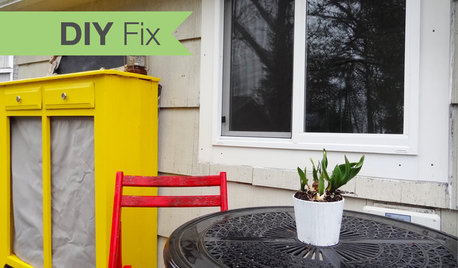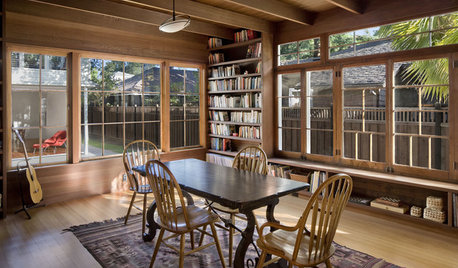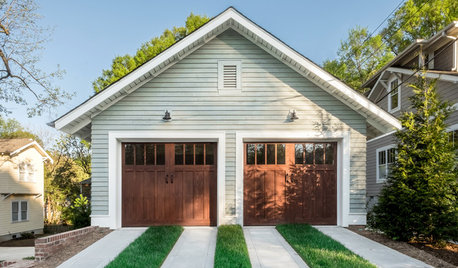Replacing attic insulation
bppark
11 years ago
Related Stories

WINDOW TREATMENTSEasy Green: 9 Low-Cost Ways to Insulate Windows and Doors
Block drafts to boost both warmth and energy savings with these inexpensive but effective insulating strategies
Full Story
REMODELING GUIDESCool Your House (and Costs) With the Right Insulation
Insulation offers one of the best paybacks on your investment in your house. Here are some types to discuss with your contractor
Full Story
MATERIALSInsulation Basics: What to Know About Spray Foam
Learn what exactly spray foam is, the pros and cons of using it and why you shouldn’t mess around with installation
Full Story
GREEN BUILDINGInsulation Basics: Heat, R-Value and the Building Envelope
Learn how heat moves through a home and the materials that can stop it, to make sure your insulation is as effective as you think
Full Story
GREEN BUILDINGEcofriendly Cool: Insulate With Wool, Cork, Old Denim and More
Learn about the pros and cons of healthier alternatives to fiberglass and foam, and when to consider an insulation switch
Full Story
GREEN BUILDINGInsulation Basics: Designing for Temperature Extremes in Any Season
Stay comfy during unpredictable weather — and prevent unexpected bills — by efficiently insulating and shading your home
Full Story
Replace Your Windows and Save Money — a How-to Guide
Reduce drafts to lower heating bills by swapping out old panes for new, in this DIY project for handy homeowners
Full Story
REMODELING GUIDESReplace vs. Restore: The Great Window Debate
Deciding what to do with windows in disrepair isn't easy. This insight on the pros and cons of window replacement or restoration can help
Full Story
GREEN BUILDINGInsulation Basics: Natural and Recycled Materials
Consider sheep’s wool, denim, cork, cellulose and more for an ecofriendly insulation choice
Full Story
GREAT HOME PROJECTSHow to Replace or Revamp Your Garage Doors
Boost curb appeal and maybe even security with new garage doors. Find out cost ranges and other important details here
Full StoryMore Discussions






ionized_gw
energy_rater_la
Related Professionals
Beverly Hills Solar Energy Systems · Cocoa Beach Solar Energy Systems · Richmond Solar Energy Systems · New Lenox Solar Energy Systems · Carlsbad Home Automation & Home Media · Chicago Home Automation & Home Media · Columbia Home Automation & Home Media · Hialeah Gardens Home Automation & Home Media · Kissimmee Home Automation & Home Media · North Merrick Home Automation & Home Media · San Bruno Home Automation & Home Media · The Villages Home Automation & Home Media · Shawnee Fireplaces · Colorado Springs Fireplaces · Leander FireplacesbpparkOriginal Author
ionized_gw
energy_rater_la
ionized_gw
bpparkOriginal Author
energy_rater_la
mrconstinc
ionized_gw
energy_rater_la